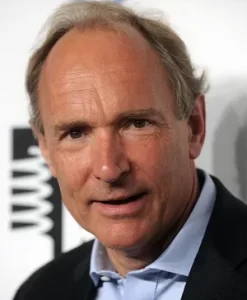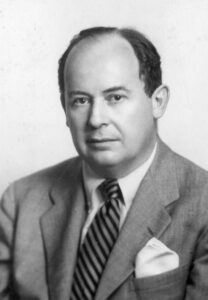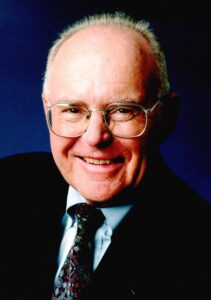by Tawnya Mayo
This June, as we are thinking about our own fathers and pouring over lists of the Top Tech for Dad, we thought it appropriate to recognize a few “fathers” of modern technology. Without these men and their pioneering work, we would not have the technology and digital world we do today.
 Alan Turing, Father of Modern Computing
Alan Turing, Father of Modern Computing
Alan Turing (1912-1954) was a mathematician, computer scientist, logician, cryptanalyst, philosopher, and theoretical biologist, and became known as the father of theoretical computer science. His early work with the British Government Code and Cypher School was crucial in cracking the Enigma code during WWII, proving essential in the Allies efforts in the war. Working at Bell Labs in the US, Turing contributed to the construction of a portable secure voice communications machine. Back in London, Turing produced the first detailed design for a stored-program computer in 1946. Turing continued working on abstract work in mathematics, in Computing Machinery and Intelligence, and proposed what became known as the Turing test to test for machine intelligence, a reversed form of which is the CAPTCHA test on the internet. Along with a former undergrad colleague, Turing wrote a chess program for a computer that didn’t exist yet – the computers at the time didn’t have enough power to execute the program. Alan Turing defined computation and outlined its limits, and laid the groundwork for artificial intelligence.
Read more about Alan Turing and his computing contributions here.
 Tim Berners-Lee, Father of the World Wide Web
Tim Berners-Lee, Father of the World Wide Web
Tim Berners-Lee (born 1955) was a British computer scientist best known as the inventor of the World Wide Web, the HTML language, the URL system, and HTTP. With both his parents working on the first commercial computer, the Ferranti Mark I, of course Time was a natural at computing. After designing computer software for a few years, Berners-Lee landed at CERN, where he developed a program for himself to store information in files while working on the design of the lab’s computer network. In 1989, back at CERN, Berners-Lee proposed the creation of a global hypertext document system to provide researchers the ability to share their results, techniques, and practices. The resulting software he wrote became the first Web server and the first Web browser.
Read more about Tim Berners-Lee and the beginnings of the World Wide Web here.
 Claude Shannon, Father of Information Theory
Claude Shannon, Father of Information Theory
Claude Shannon (1916-2001) was an American mathematician, electrical engineer, computer scientist, cryptographer, and inventor. Claude Shannon is not well known – he didn’t win a Nobel Prize, never became a household name – but he theorized a method of transmitting information and published “A Mathematical Theory of Communication” in 1948. His theory underpins all digital data transfer, making modern telecommunications and data compression possible. His theory is a theory of communication and a theory of how information is produced and transmitted.
Read more about Claude Shannon and his theory of communication here.

John von Neumann, Father of Computer Architecture
John von Neumann (1903-1957) was a mathematical child prodigy. His work in applied mathematics influenced quantum theory, automata theory, economics, and defense planning. He pioneered game theory, lectured on quantum theory at Princeton, and worked on the Manhattan Project. After WWII, von Neumann contributed to the improvement of computer machines and the merit of a single-processor, stored-program computer. This architecture model of where a computer’s memory holds both data and instructions, known as a von Neumann machine, is still used today. While many people questioned his shift to applied mathematics mid-career, with his contributions to quantum theory, the atomic bomb, and the computer, von Neumann likely had “a greater influence on the modern world than any other mathematician of the 20th century.”
Read more about Jon von Neumann and his many contributions to modern computers here.
 Gordon Moore, Father of Moore’s Law
Gordon Moore, Father of Moore’s Law
Gordon Moore (1929-2023) loved chemistry from an early age, and entered the modern technology world through chemistry and physics. He joined Shockley Semiconductor – the company that became the basis of California’s Silicon Valley – in 1956, purifying silicon for transistors and other semiconducting devices. Moore left Shockley to help establish Fairchild Semiconductor and was instrumental in developing the planar process that created the smooth silicon dioxide surface which the first integrated circuits would be printed on. Moore led Fairchild in the development of the metal oxide semiconductor transistor that is used in most computer chips today. Moore predicted that the number of transistors that would fit on a chip would double every two years. This became known as Moore’s Law, and his prediction has proven accurate thus far. As the future of the Fairchild company looked bleak, Moore and a colleague, Robert Noyce – the inventor of the integrated circuit, founded Intel Corporation in 1968, remaining leaders in microprocessor chips still today.
Read more about Gordon Moore and his contributions to technology here.
These five pioneers laid the foundation for the tech we use every day—from powerful microchips to the internet itself. As we celebrate dads this June, we salute these founding fathers of modern technology who helped shape our digital world.
